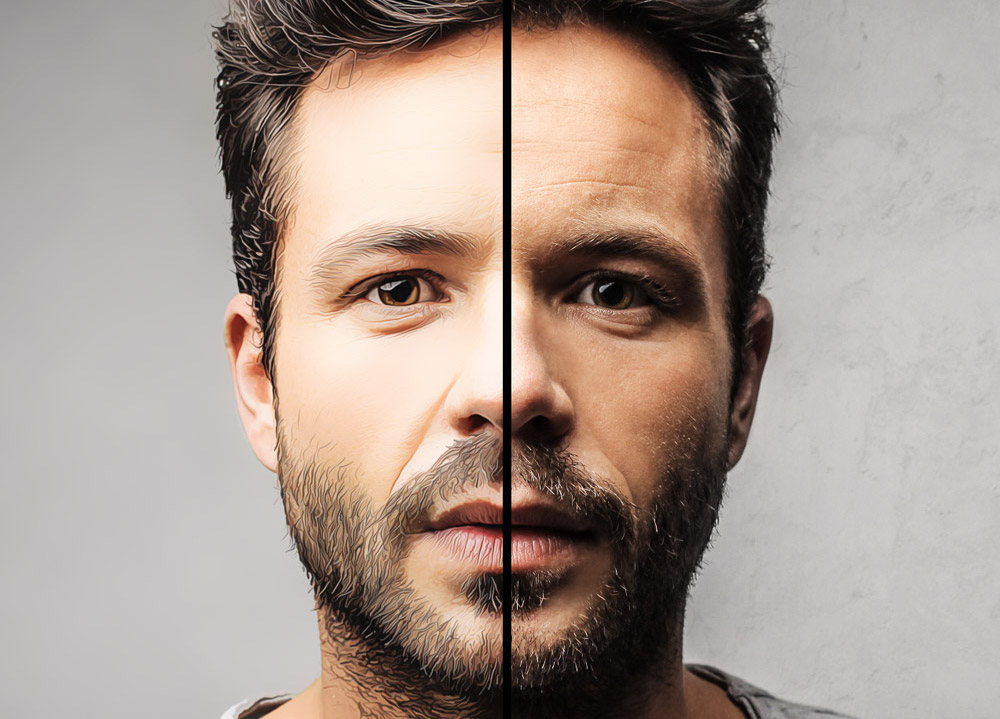Mastering the Art of Creating a Realistic Painted Effect in Photoshop: A Comprehensive Guide

Introduction:
In the realm of digital design and visual artistry, the creation of a realistic painted effect stands as a captivating technique that adds depth, texture, and a touch of artistic flair to images and compositions. Inspired by the rich tradition of traditional painting techniques and the versatility of digital tools, this effect transforms ordinary photographs into stunning works of art that evoke emotion and creativity. Whether used in digital art, photo manipulation, or graphic design, mastering the creation of a realistic painted effect in Adobe Photoshop offers designers and artists a versatile tool for unleashing their creativity and elevating the impact of their artwork. In this comprehensive guide, we will embark on a journey through step-by-step techniques, expert tips, and creative strategies to master the art of creating a realistic painted effect in Photoshop.
Understanding the Realistic Painted Effect:
The realistic painted effect aims to replicate the appearance of traditional painting techniques, such as oil, watercolor, or acrylic, using digital tools and techniques. This effect can be applied to various elements within a composition, such as portraits, landscapes, or still life photographs, to create a sense of depth, texture, and artistic expression. By leveraging techniques such as brush tools, layer blending modes, and texture overlays, designers can achieve stunning results that captivate viewers and evoke the essence of traditional painting.
Now, let’s delve into the step-by-step process of creating a realistic painted effect in Adobe Photoshop:
Step 1: Setting Up the Document:
Begin by opening Adobe Photoshop and creating a new document with dimensions suitable for your design project. Choose a resolution and color mode appropriate for your intended output, such as print or digital display.
Step 2: Importing the Base Image:
Import the base image onto which you want to apply the painted effect. Choose an image with elements that you want to enhance or transform using the painting techniques. This could be a photograph, digital artwork, or any other image that serves as the foundation for your artistic expression.
Step 3: Preparing the Base Image:
Before applying the painted effect, it’s essential to prepare the base image by adjusting its levels, contrast, and color balance to achieve the desired look and feel. Use adjustment layers such as Levels, Curves, or Hue/Saturation to fine-tune the colors and tones of the image, ensuring a solid foundation for the painting process.
Step 4: Creating a New Layer:
Create a new layer above the base image layer by clicking on the “New Layer” icon at the bottom of the Layers panel. This new layer will serve as the canvas for painting the effect.
Step 5: Selecting the Brush Tool:
Select the Brush tool (B) from the toolbar and choose a brush preset that emulates the texture and characteristics of the desired painting style, such as oil, watercolor, or acrylic. Experiment with different brush sizes, shapes, and opacity levels to achieve the desired effect.
Step 6: Applying Brush Strokes:
With the new layer selected, begin painting brush strokes onto the canvas layer to create the painted effect. Use a combination of short, quick strokes and long, sweeping strokes to mimic the brushwork of traditional painting techniques. Pay attention to areas of light and shadow, as well as texture and detail, to create a realistic and expressive effect.
Step 7: Layer Blending Modes:
Experiment with layer blending modes to blend the painted strokes with the underlying image layer. Overlay, Soft Light, and Multiply blending modes often work well for blending the painted effect with the base image while preserving the texture and detail of both layers.
Step 8: Adding Texture Overlays:
To enhance the realism and texture of the painted effect, consider adding texture overlays to the canvas layer. Use texture images or brushes to add elements such as canvas texture, brush strokes, or paint splatters to the painting, adding depth and visual interest to the composition.
Step 9: Adjusting Opacity and Blending:
Fine-tune the opacity and blending settings of the painted effect layer to achieve the desired level of intensity and realism. Experiment with adjusting the opacity, fill, and blending modes to seamlessly integrate the painted effect with the base image layer, ensuring a cohesive and visually striking composition.
Step 10: Final Touches and Refinements:
Once you’re satisfied with the painted effect and overall composition, take the time to make any final adjustments or refinements to the design. Fine-tune the colors, contrast, and overall atmosphere to ensure that the effect enhances the mood and aesthetic of the artwork. Pay attention to details such as brushwork, texture, and lighting to create a cohesive and visually compelling painting.
Advanced Techniques and Tips:
In addition to the basic steps outlined above, consider exploring advanced techniques and tips to further enhance the realistic painted effect:
- Layer Masks: Use layer masks to selectively reveal or conceal parts of the painted effect, allowing for precise control over the appearance and blending of the painting with the base image. This technique can be particularly useful for creating smooth transitions and adding depth to the composition.
- Custom Brushes: Create custom brushes to add unique and personalized elements to the painted effect. Experiment with brushes that mimic specific painting techniques, such as impasto, glazing, or dry brush, to add authenticity and detail to the painting.
- Color Mixing: Emulate the color mixing properties of traditional painting techniques by using blending modes and adjustment layers to mix and blend colors on the canvas layer. Experiment with techniques such as color blending, hue shifting, and color dodging to achieve realistic and vibrant color transitions.
- Texture Variation: Introduce variation in texture and brushwork to create a more dynamic and expressive painting. Experiment with different brush sizes, shapes, and pressure levels to vary the texture and intensity of the brush strokes, adding depth and visual interest to the composition.




